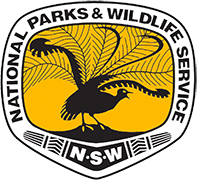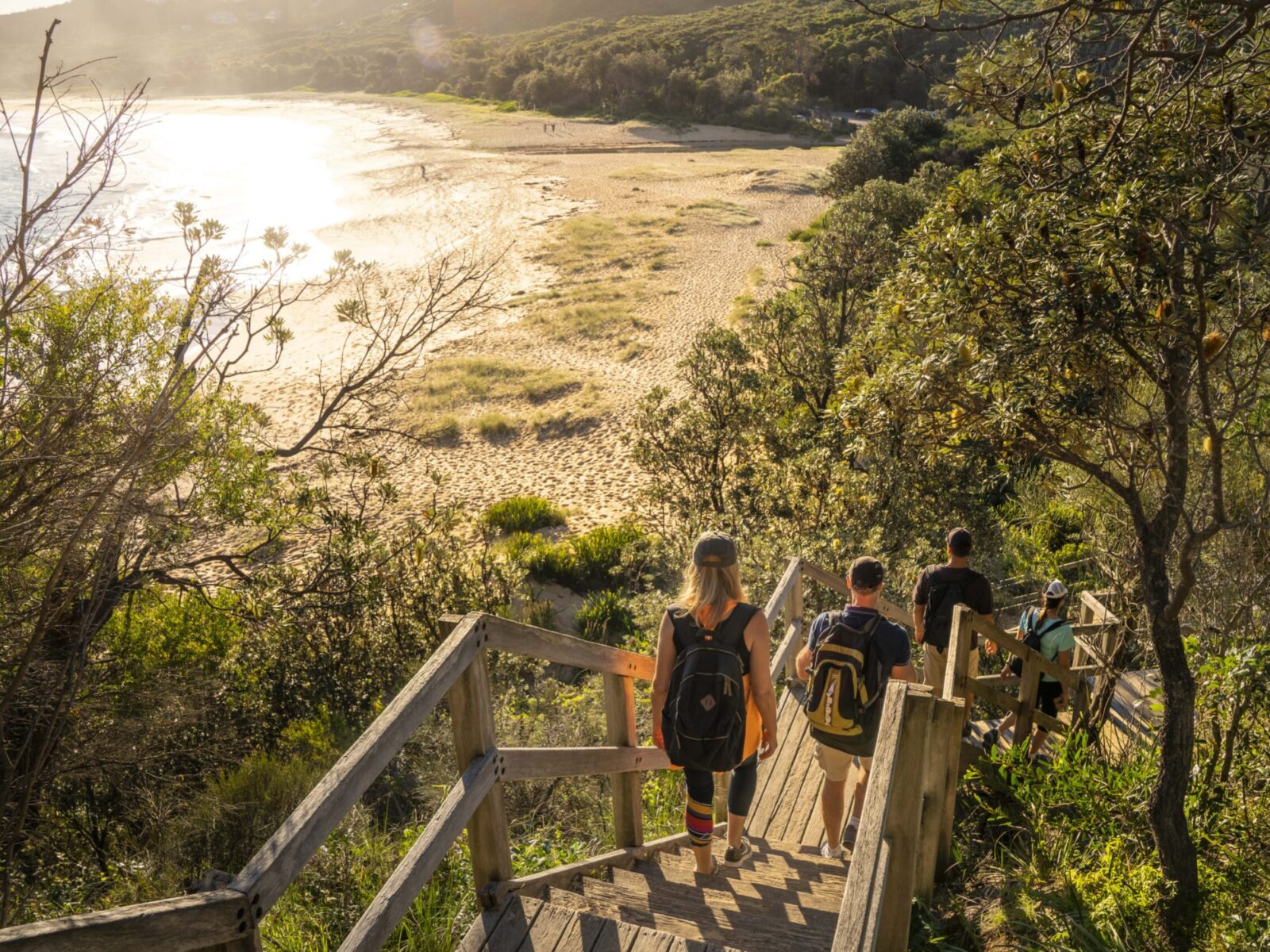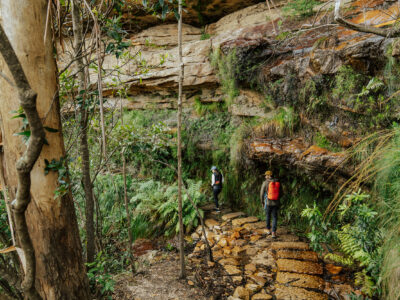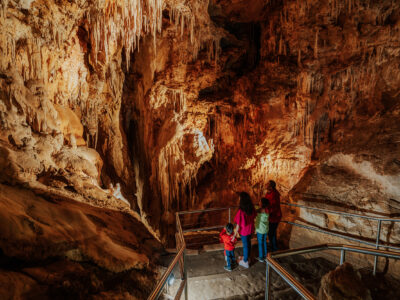We spoke to Aaron Mulcahy, a botanist and Senior Conservation Planning Officer for Saving our Species, to help us understand and learn some lingo of the big wide world of plants in NSW.
Read about some of the ecosystems and environments in our national parks and discover what makes them unique.
-
Rainforests
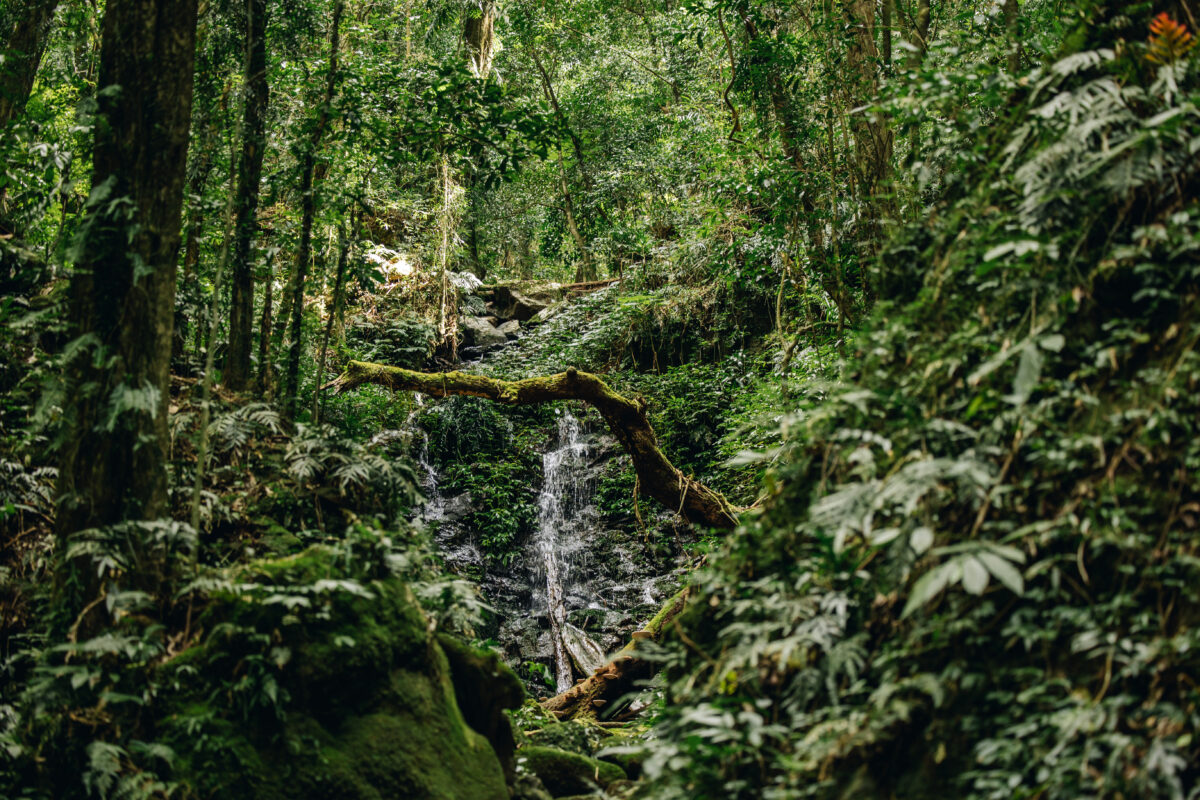 Photo Information
Photo InformationDorrigo National Park Scenery
Dorrigo National Park
Jay Black / DPE
Rainforests are one of the most recognisable ecosystems in NSW, characterised by a dense canopy of rich green foliage, made up of trees with soft, horizontally-held leaves. Usually occurs in areas that are mostly free of fire and reliably moist – like gullies or south-facing slopes – with moderate to highly fertile soils.
Did you know? Rainforests are important habitats for many birds that feed on fruit, such as the threatened superb fruit-dove (Ptilinopus superbus), because of the variety of fruits produced by rainforest trees.
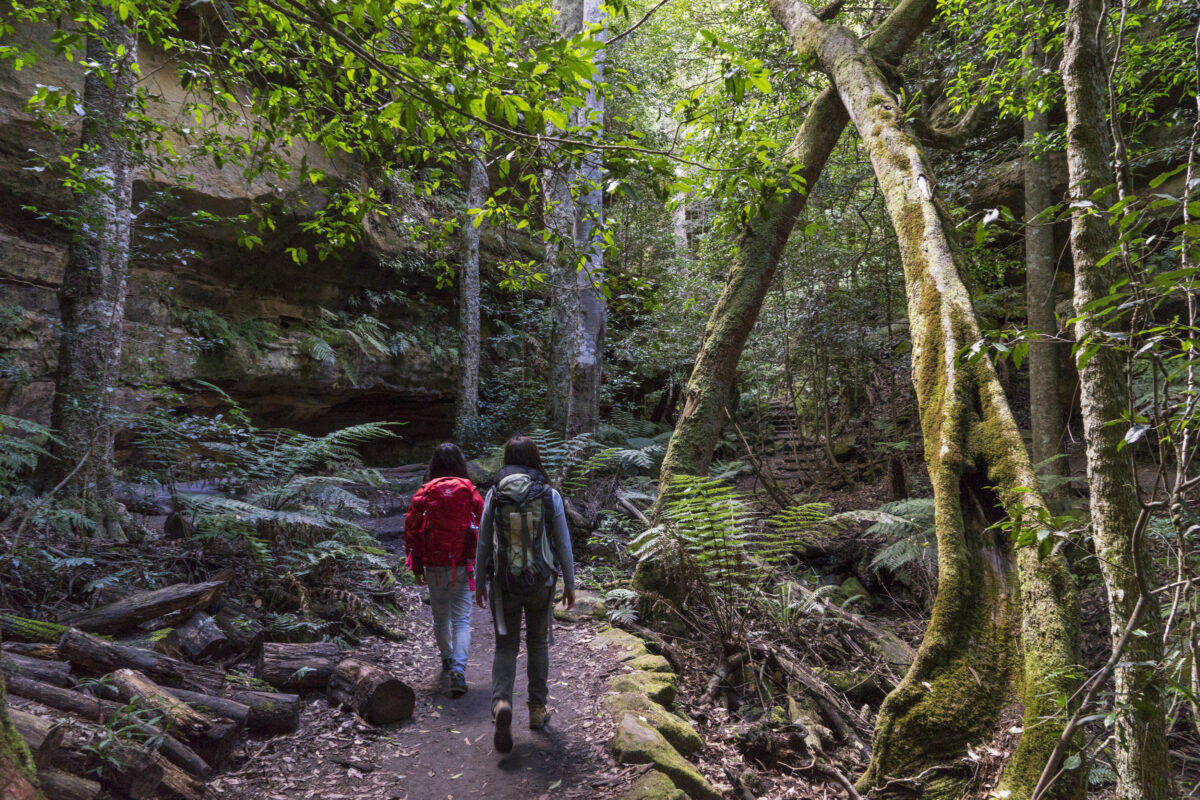 Photo Information
Photo InformationGrand Canyon track, Blue Mountains National Park
Blue Mountains National Park
Simone Cottrell / DPE
The lack of eucalypts in these environments is a defining feature of rainforests, and the understorey of plants (such as ferns, palms, climbers, epiphytes, and mosses) thrive in the low light and moist microclimate provided by rainforest canopies. This cooler weather also makes rainforests a great place to go bushwalking in summer.
Did you know? A layer of vegetation beneath the main rainforest canopy is called an understorey.
-
Heathlands
View this post on InstagramHeathlands are scrubland filled with a diverse range of shrubs and plants with hard (sclerophyllous) leaves. They are usually found in harsh or exposed locations, like wind-swept headlands, where soils have low fertility. These soil and wind conditions stop tall trees from growing – a distinguishing feature of this environment.

Photo InformationShrubland
Morton National Park
Michael Van Ewijk / DPE

Photo InformationWattle plant
Oxley Wild Rivers National Park
Jessica Stokes / DPE
The soils found here are generally shallow and low in phosphorus, nitrogen, potassium, and magnesium, which are key nutrients for plant growth. To overcome this, heathland plants are incredibly economical in their nutrient use, – surviving thanks to their slow growth rates, sclerophyllous leaves, specialised roots, and symbiotic relationships with soil fungi.
What are Sclerophyllous leaves? Sclerophyll is a type of vegetation that is adapted to long periods of dryness and heat. Typically scrub, but also woodland, in which the leaves of the trees and shrubs are evergreen, small, hard, thick, and leathery.
Some of the most well-known plants in Australia are found here – think banksias, grevilleas, wattles (Acacia), tea-trees (Leptospermum), and grass trees (Xanthorrhoe). And see them for yourself in these heathland environments here.
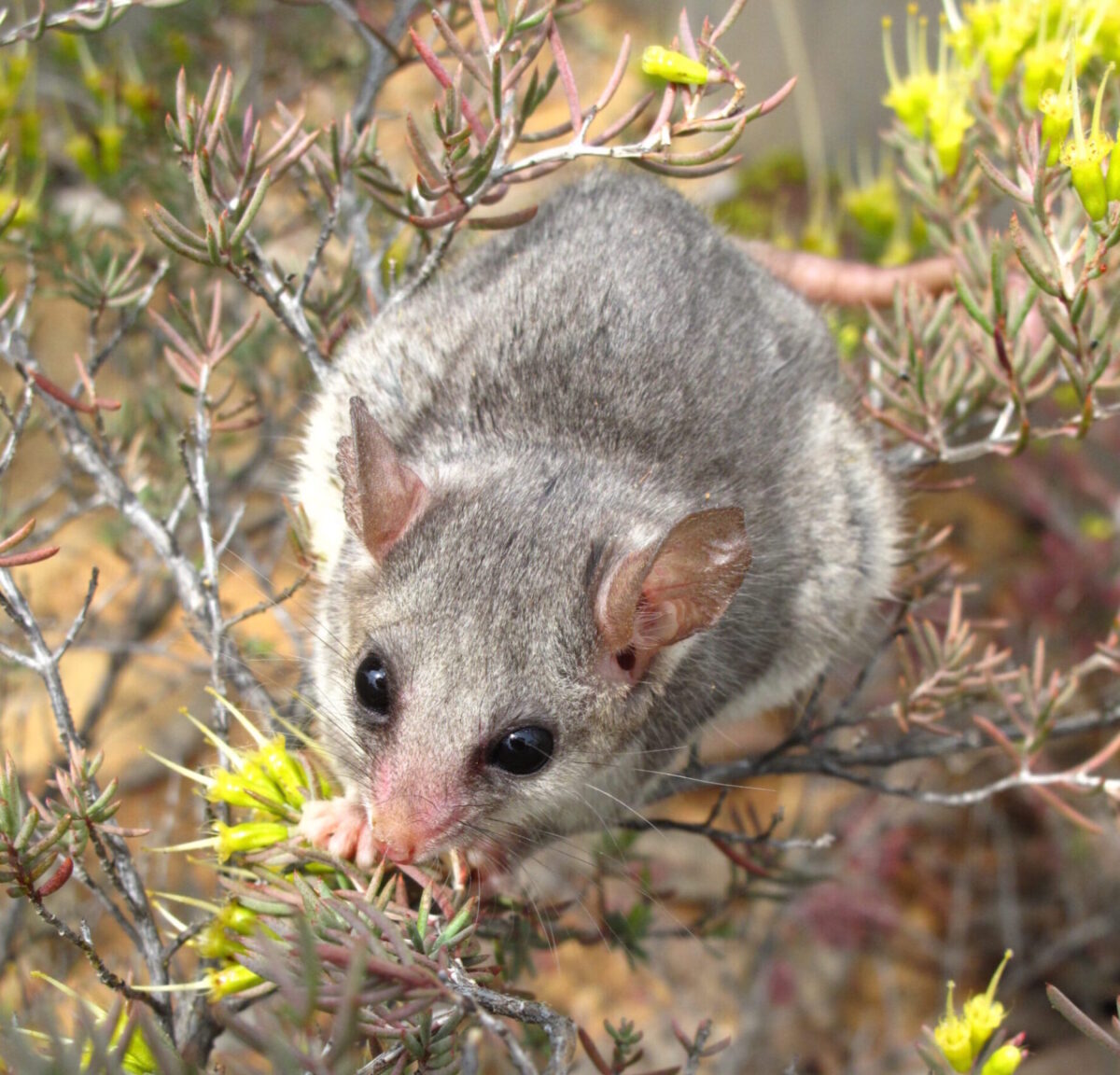 Photo Information
Photo InformationEastern Pygmy-possum
Justin Mallee © Justin Mallee / DPE
During certain times of the year, many of these plants produce a stunning sight of large eye-catching flowers with large amounts of nectar and pollen. This display attracts a varied range of birds, particularly honeyeaters, along with nectar and pollen-feeding mammals, such as the threatened Eastern pygmy-possum (Cercartetus nanus).
-
Wetlands
 Photo Information
Photo InformationSouthern Macquarie Marshes
Macquarie Marshes Nature Reserve
John Spencer / DPE
Wetlands are areas of land with permanent or temporary flooding, from either standing or slow-moving water. The plants and animals found in wetlands are influenced by the timing, frequency, duration, depth, and extent of this water. This makes wetlands highly diverse in their plant species – shrubs, sedges, rushes, herbs, ferns, and grasses can all thrive here.
Did you know? Some wetlands can be dominated by trees – called forested wetlands, but differ from other forest types by the presence of ‘hydrophytes’ in their understorey. Hydrophytes are plants that have adapted to grow in flooded environments.
There are two broad types of wetlands in NSW: freshwater and saline. Saline wetlands differ from freshwater due to an abundance of salt – mangrove swamps, salt marshes, and inland saline lakes can all be found in these salty waters.
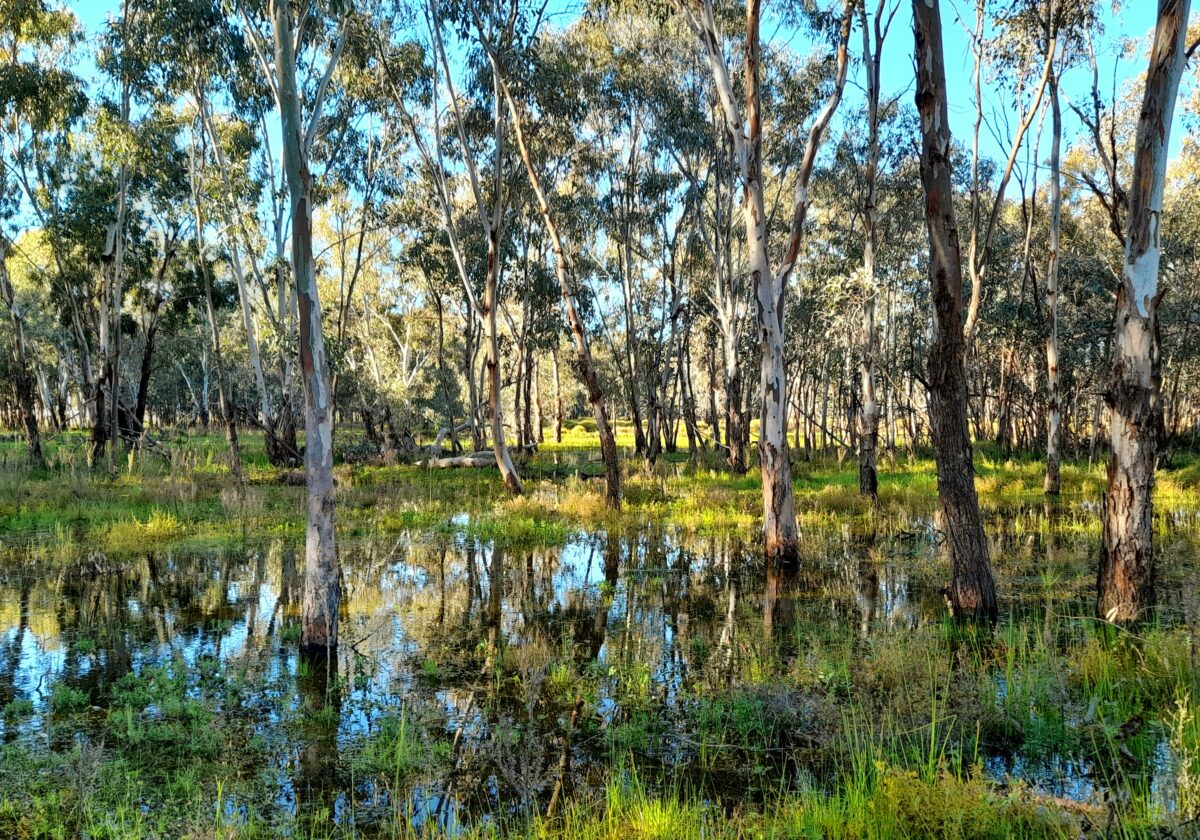 Photo Information
Photo InformationNorth Marsh Macquarie Marshes
Macquarie Marshes Nature Reserve
Nicola Brookhouse / DPE
Unlike other environments in NSW, many common plant families, and even some species of plants, can be found in wetlands all over the world. While water helps to spread many aquatic plants, waterbirds are also key in spreading seeds, moving them over long distances in their feathers, feet or stomachs.

Photo InformationCorroboree Frog,
Kosciuszko National Park
John Spencer / DPE

Photo InformationAustralian Painted Snipe.
Leo Berzins / DPE
Because wetlands are rich in water and nutrients, they support an abundance of animals. Wetlands are crucial to the survival of threatened species across NSW, including the critically endangered Southern corroboree frog in alpine sphagnum bogs and fens, and the wallum froglet in coastal sedgelands and wet heath. An array of waterbirds also live in coastal and inland wetlands, like the endangered Australian painted snipe.
Wild about wetlands? Find out more about these essential ecosystems and check out Paroo-Darling National Park or more of our favourite wetlands here
-
Desert and arid shrublands
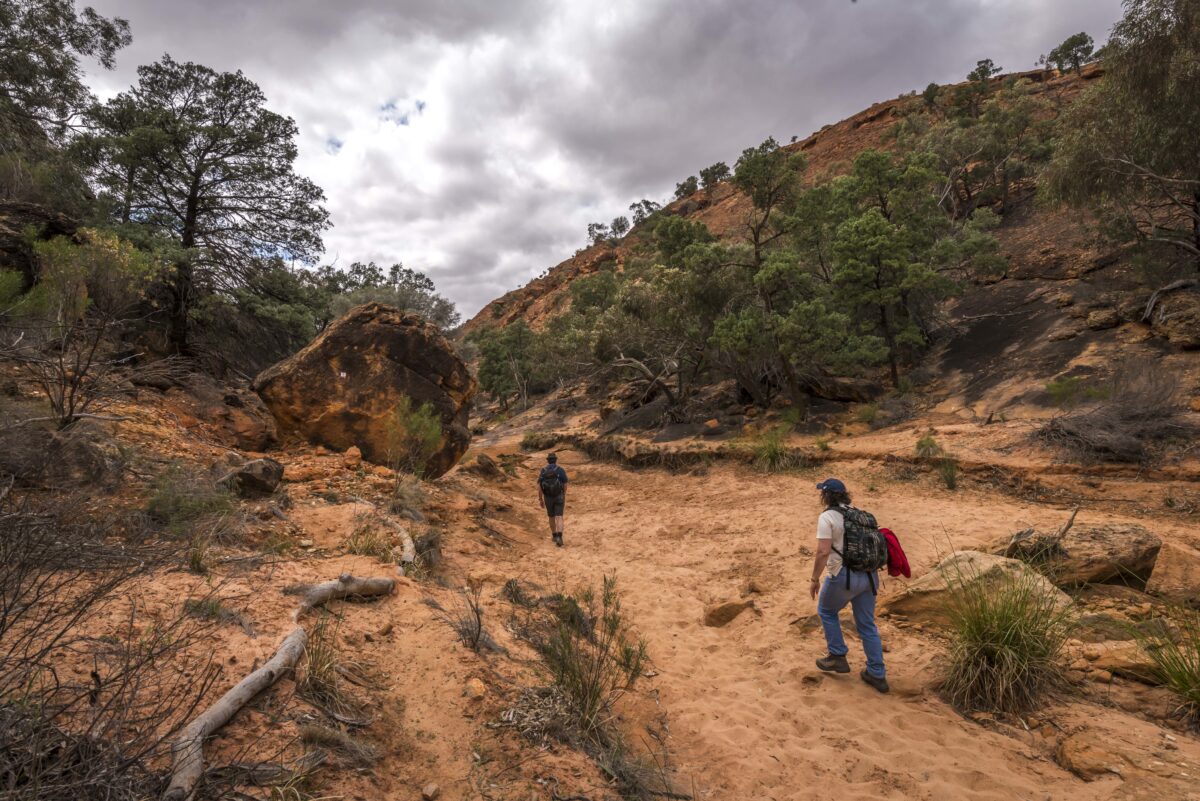 Photo Information
Photo InformationHomestead Gorge trail, Mutawintji National Park
Mutawintji National Park
John Spencer / DPE
In the arid and semi-arid regions of western NSW, you’re likely to see shrublands dominated by saltbushes, bluebushes, copperburrs, and wattle. These plants – scientifically known as chenopods and acacias – are suited to this environment, where rainfall is irregular and soil moisture too low to support woodlands or forests. This includes the Australian native saltbush which flowers during December to April, and can be found in Murray Valley National Park, Kinchega National Park ond these other parks here.
Perennial plants, such as wattles, saltbushes, and copperburrs, have adapted to tolerate the hot and dry conditions here, with deep and extensive root systems to maximise the amount of moisture they can absorb through their soil, or needle-like vertical leaves to minimise heating and water loss.
Did you know: Perennial plants are plants that live for three growing seasons or more, and usually refers to smaller herbaceous plants (which don’t have a woody stem above the ground, instead they have a soft, green flexible stem) rather than larger trees, bushes, or shrubs.
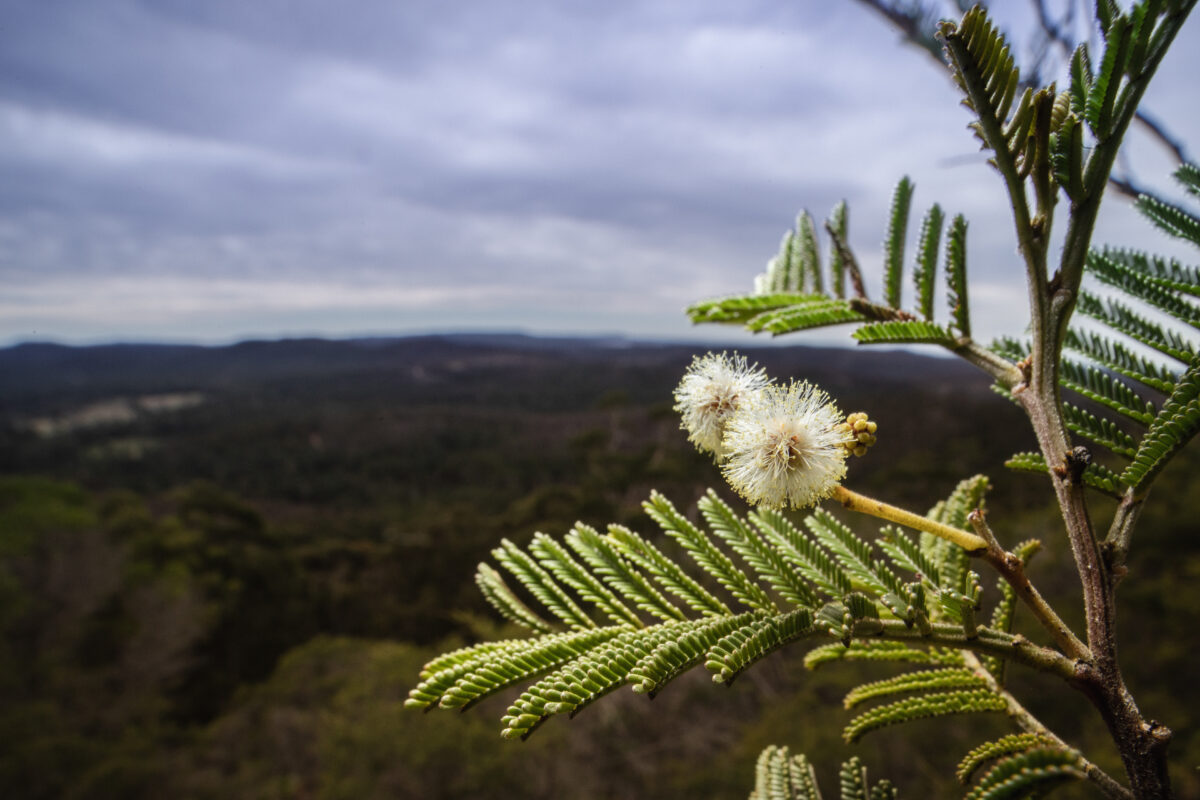 Photo Information
Photo InformationNarrabarba Wattle.
Alex Pike / DPE
Some plants have adopted a different strategy and, rather than trying to stick out these harsh conditions, they wait for rare rain events and then make the most of them. These ephemeral (short-lived) plants spend most of their existence as seeds buried in the soil, waiting patiently for a large rainfall event. This triggers germination, and the seedlings then mature quickly and may flower within weeks, replenishing the soil seed bank while good conditions last, and sometimes spectacular desert wildflowers bloom. Once the soil dries out again, these plants then die off and disappear just as quickly as they appeared.

Photo InformationNumbat
Wayne Lawle / DPE

Photo InformationBilby
Mallee Cliffs National Park
Brad Leue / DPE
Arid shrublands are exceptionally rich in reptiles, especially in rocky habitats and areas with grasslands (spinifex hummocks), where they can feast on plenty of termites. They are also home to some of Australia’s most iconic threatened species such as the bilby and the numbat.
NSW National Parks and Saving our Species can’t imagine a world without our deserts and rainforests, and together are dedicated to securing a future for our threatened species in the wild. Find out how you can join the movement to help.
Want to know where to go to show off some of your new found plant lingo? Check out: Ancient Gondwana rainforests that you can visit.
